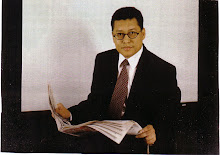Saturday November 21, 2009
Education for the real world
INSIGHT: DOWN SOUTH
By SEAH CHIANG NEE
Government plans call for developing school pupils in other than academic pursuits, with less emphasis on exams, to equip young people better for life. But some parents still baulk at the change.
FOR years, Singapore’s schools have been steering a bit away from their traditional teaching towards a 21st century “ideas” economy. The pursuit, however, has been sporadic rather than countrywide. But come 2016, an institutional transformation will take place in all primary schools.
The revamp, announced last week, is aimed at making pupils adept at not only Science and English, but also at thinking and communicating.
In seven years’ time – when enough buildings and teachers are in place – all Singapore primary schools (attended by thousands of foreigners) will introduce full-day sessions.
More importantly, they will do away with mid- and end-year exams in Primary One and Two, and only graduates would be allowed to teach.
The future classroom will introduce 7- and 8-year-olds to outdoor education, where music and visual arts will be given as much importance as traditional subjects.
“For kids of this age, exams will not figure at all,” one official said. They will be replaced by assessments of a student’s progress.
Thirdly, children will be encouraged to take up co-curricular activities (CCAs) from Primary 1.
On the longer hours, a senior official said: “We are not adding on academic content to make it a burden to students; we’re trying to build their life skills as well as values, … rebalancing the focus of our system.”
Education Minister Dr Ng Eng Hen said: “We want to have caring citizens ... and students to be independent learners and confident (people).”
These changes, to be extended later to secondary schools, will in part end a system inherited from the British that emphasised exams and rote learning.
It proved successful in producing an educated, disciplined workforce that turned Singapore into a developed nation. Besides, the secondary schools are regularly ranked the world’s top three in Science and Maths.
But in a world in which nations compete with ideas and technical skills, Singapore’s education system has outlived some of its usefulness.
In my course of reporting in recent years, I have frequently heard executives of multinational corporations complain that our data-skilled workers lack initiative and require hand-holding.
This is what the new education system hopes to rectify. The result so far has been impressive.
One neighbourhood primary school has infused robotics into its science teaching, with students designing simple robots and learning about their inner workings.
Thousands of students at another school are taught not only to identify a healthy, nutritious meal, but also to cook it.
Others require their pupils to write compositions on a tablet PC, using PowerPoint for images and colour fonts.
At Hougang Primary, seven-year-olds share their classrooms with an assortment of insects, plants and skeleton frames.
The secondary schools are even more into the game, including practising entrepreneurship.
At a premium school they ran an art gallery carnival, drawing up proposals for manpower costing, concept plans and profit margins.
These experiments are not confined to the top schools. Many “unbranded” ones also excel in them.
One of them has allowed students to operate a general store that sells products and services (like photocopying) to other students. In Jurong Junior College and Fuchun Primary, students can buy shares in businesses in their schools.
Junior college students have met to tackle Singapore’s declining birth rates, while polytechnic youths created a new fragrance and began marketing it to romancing couples – and invented a health-food chocolate for sale to the public.
The strategy is to develop students who are not academically inclined but skilled in other areas like IT, music, sports or designing.
Minister Mentor Lee Kuan Yew said Singapore’s economy needs all kinds of talented people.
“We now have to try and bring up people who do not necessarily do well in the universities, but who will do well in life,” he said.
On the weaknesses of the current system, one blogger said it successfully produced many A-grade students who were unable to put knowledge to good use “like starting a business.”
Not everyone believes this change can be achieved soon, at least not until the government relaxes its control on this regulated society.
Some do not think it can be – or need be – done at all. Parents who have a fixation on exams and high marks are among the biggest stumbling blocks.
A prominent blogger quoted from a speech given by Sir Ken Robinson, an expert in creative and cultural education, who said children had no need to be taught to be creative.
The reason: they already are creative, and often it is the schools that are educating them out of their creative capabilities, he said.
On the subject of feared failure, Sir Ken said: “Kids will take a chance. If they don’t know, they’ll have a go. They’re not frightened of being wrong ...
“By the time they get to be adults, most kids have lost that capacity. They have become frightened of being wrong. And we run our companies this way. We stigmatise mistakes,” he added.
The determination of Singapore’s mothers to fight for their children’s high grades has played a major role in the nation’s education.
With the new strategy, it could prove negative for their kids when they fail to re-adapt.
Subscribe to:
Post Comments (Atom)

No comments:
Post a Comment